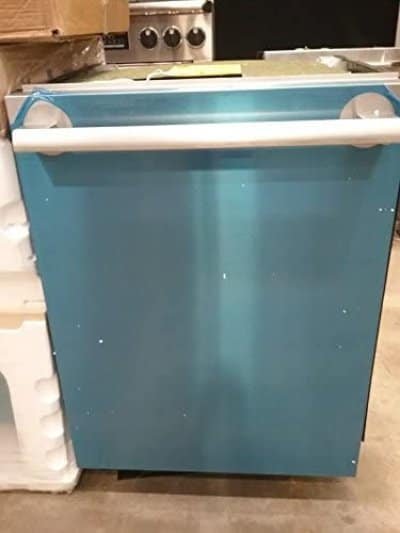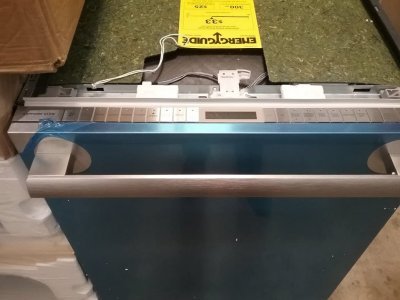Dishwashers have become an essential part of our daily lives, making it easier for us to clean our dishes without having to do it by hand. However, there may come a time when you need to remove your dishwasher, either to replace it with a new one or to make space for a different appliance. Removing a dishwasher may seem like a daunting task, but with the right tools and instructions, it can be done easily and safely. In this article, we will guide you through the process of removing a dishwasher step by step.
Table of Contents
Step 1: Turn Off the Power
Before you start removing the dishwasher, you need to ensure that the power supply is turned off. Locate the circuit breaker that controls the dishwasher and turn it off. If you are unsure which circuit breaker controls the dishwasher, turn off the main circuit breaker to be safe.
Step 2: Disconnect the Water Supply
The next step is to disconnect the water supply to the dishwasher. Locate the shut-off valve that controls the water supply to the dishwasher and turn it off. The shut-off valve is usually located under the kitchen sink or in the basement. Once the water supply is turned off, disconnect the water supply line from the dishwasher. You may need a pair of pliers or a wrench to loosen the connection.
Step 3: Disconnect the Drain Hose
The drain hose is the tube that carries wastewater from the dishwasher to the drain or garbage disposal. Locate the drain hose and disconnect it from the dishwasher. You may need to use pliers or a wrench to loosen the connection. Once the drain hose is disconnected, use a bucket to collect any water that may be remaining in the hose.
Step 4: Remove the Mounting Brackets
Most dishwashers are secured to the underside of the countertop with mounting brackets. Locate the mounting brackets and use a screwdriver or a wrench to remove them. The mounting brackets may be located on the side or top of the dishwasher, depending on the model. Once the mounting brackets are removed, the dishwasher should be free from the countertop.
Step 5: Disconnect the Power Supply
The dishwasher is powered by an electrical cord that is usually plugged into an electrical outlet under the sink or in the cabinet next to the dishwasher. Locate the power cord and unplug it from the electrical outlet. If the cord is hard-wired, you may need to turn off the power at the circuit breaker before disconnecting the wires.
Step 6: Remove the Dishwasher
With all the connections disconnected, the dishwasher is now ready to be removed. Carefully pull the dishwasher out from under the countertop, making sure not to scratch the floor or damage any of the surrounding appliances or cabinets. If the dishwasher is too heavy to lift, you may need to use a dolly or get someone to help you.
Step 7: Clean Up
Once the dishwasher is removed, clean up any water or debris that may have been left behind. Check the area for any damage or leaks that may have occurred during the removal process. If there are any leaks, repair them before installing a new dishwasher.

Tips for Removing a Dishwasher
- Wear protective gear such as gloves and safety glasses to prevent injury.
- Turn off the power and water supply before removing the dishwasher.
- Use the right tools, such as pliers and wrenches, to disconnect the water and power supply lines.
- Keep a bucket handy to collect any water that may be remaining in the drain hose.
- Remove the mounting brackets carefully to avoid damaging the dishwasher or the countertop.
- Be careful when pulling the dishwasher out from under the countertop to avoid scratching the floor or damaging surrounding appliances or cabinets.
- Check the area for any leaks or damage after the dishwasher is removed.
Can I remove dishwasher myself?
Yes, you can remove a dishwasher yourself. However, it is important to be prepared and take the necessary safety precautions before attempting to do so.
First, you should turn off the power to the dishwasher at the circuit breaker. This will help ensure that no electric shock occurs during the removal process. Then, you should disconnect the water supply lines and drain hose from the wall or sink. It is also recommended that you place a bucket underneath these connections to catch any residual water that may be present.
Once all of these steps are complete, you can begin removing the dishwasher. Start by unscrewing and removing any screws or bolts holding it in place. Once this is done, carefully lift and slide the dishwasher out of its space. You may need assistance to get it completely out of its area depending on how large your appliance is.
Is it difficult to remove a built in dishwasher?
Removing a built-in dishwasher can be a challenging task, depending on the age and make of the appliance. If you’re comfortable with basic DIY tasks, you may be able to remove the dishwasher yourself.
The first step is to unplug the dishwasher from its power source. You will also need to disconnect any water lines connected to it. Depending on your model, these connections may be located underneath or behind the unit. Once all of these connections are removed, you’ll need to unscrew the mounting brackets that hold it in place. This can sometimes be difficult if they have rusted over time.
Once you’ve removed all of the screws and disconnected all necessary lines, you should be able to carefully lift out the dishwasher and move it away from its spot in your kitchen. It may take two people or more to do this safely without damaging the appliance or surrounding cabinetry.
Do you need to shut off water to remove dishwasher?
Yes, it is recommended to shut off the water supply before attempting to remove a dishwasher. This is because the dishwasher is connected to both a hot and cold water line, and shutting off the water will prevent any leaks or flooding from occurring during the removal process.
Additionally, it’s important to disconnect the electrical power supply to the dishwasher before beginning any work. Once these two steps are taken, you can then proceed with removing the dishwasher. Depending on how it was installed, this may involve unscrewing screws that hold it in place or loosening clamps that secure it to the countertop. Once all of these steps are completed, you should be able to safely remove your dishwasher.

